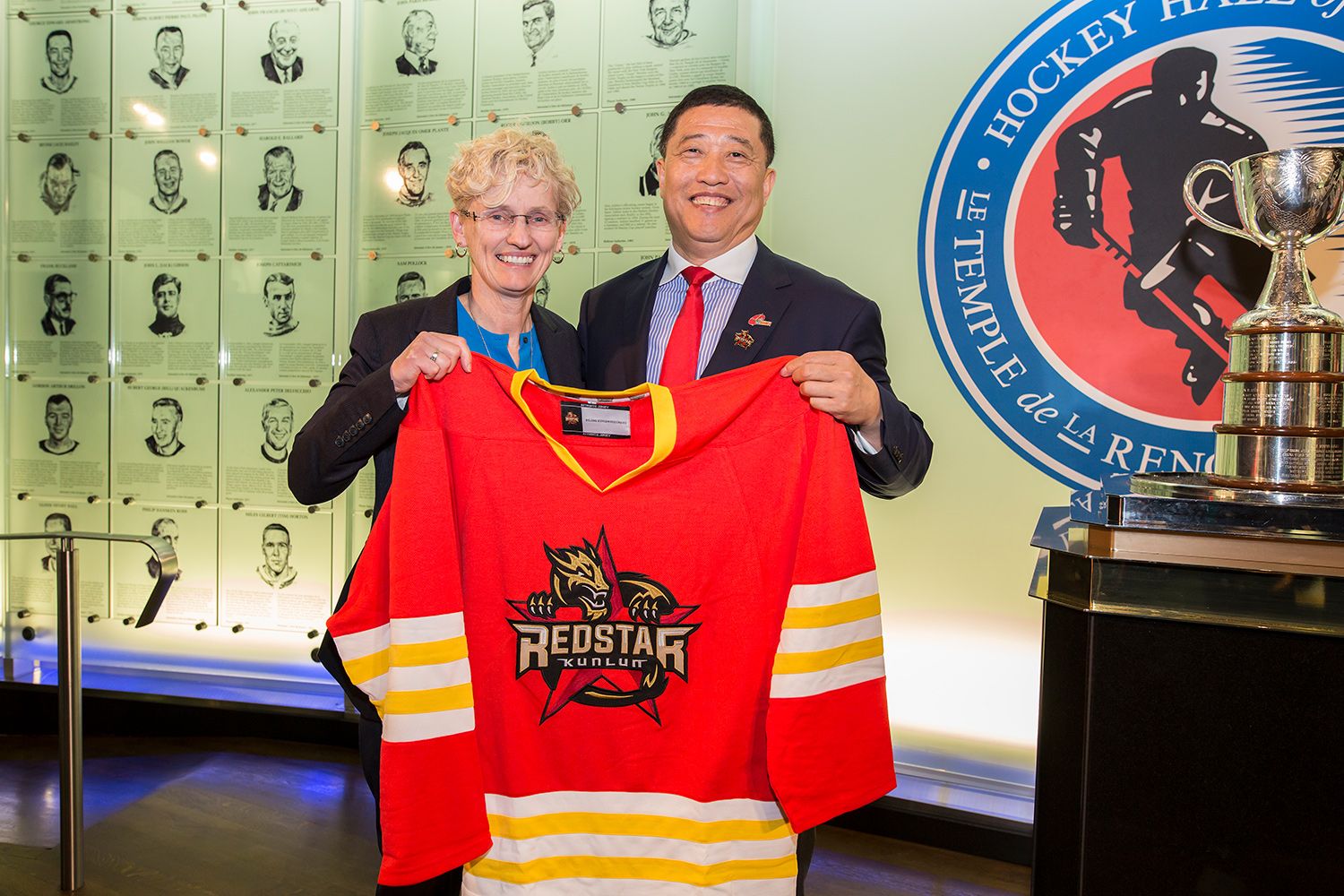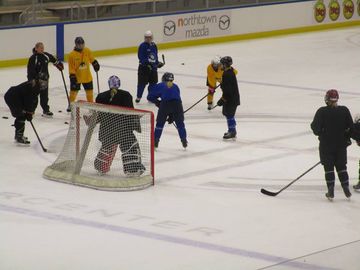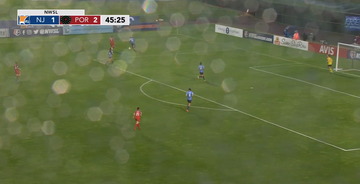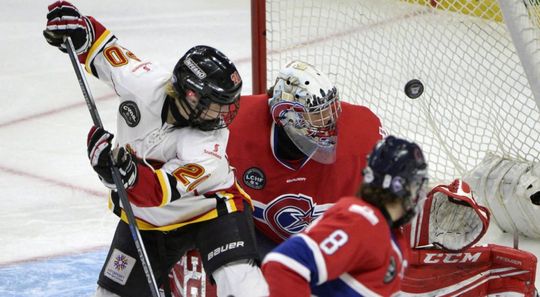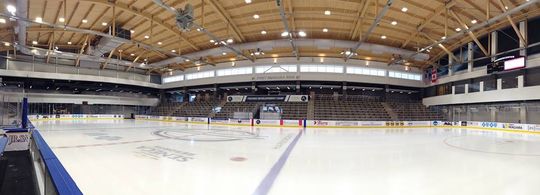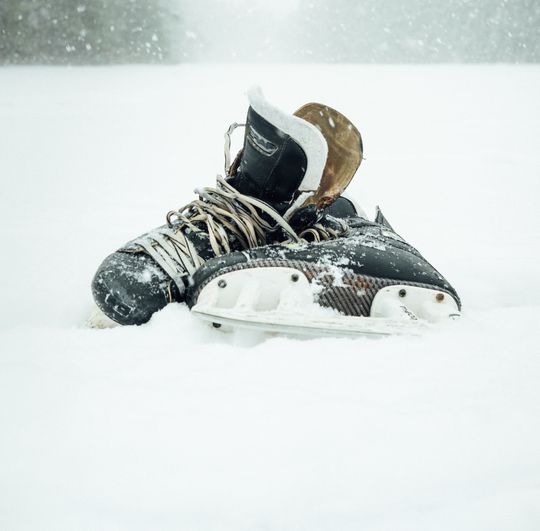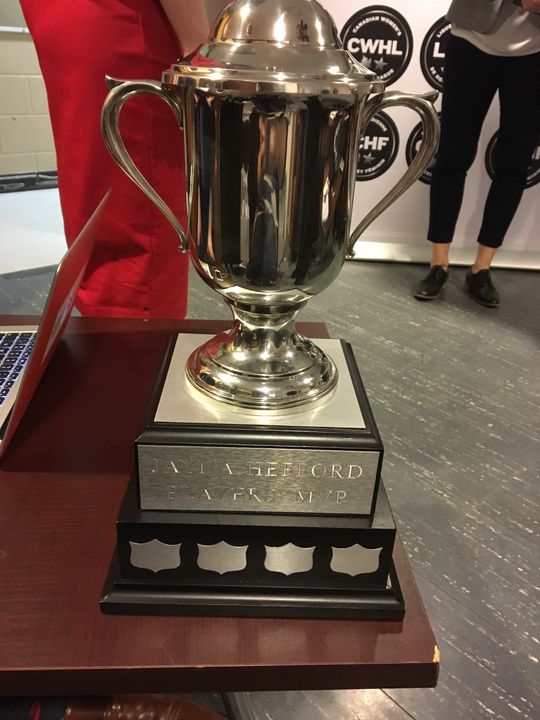This 2018 CWHL offseason seen some enormous changes so far. Most notably, CWHL Commissioner Brenda Andress is leaving her position at the end of July. Andress has been the CWHL commissioner since the league's inception in 2007. Legendary five-time Canadian Olympian (and four-time Olympic gold medalist) Jayna Hefford will be interim commissioner while the search for a permanent commissioner is underway. (It's unclear if Hefford would be in the consideration for the permanent job.)
Andress's departure comes at what was already a crossroads in pro women's hockey. Two professional leagues (the CWHL and the NWHL) have been coexisting now for three years, and debate about whether there should be a single league has been ongoing since the NWHL's emergence, including whether the NHL should be in charge of it. Recently, former Canadian national team member Hayley Wickenheiser gave an interview with The Athletic where she criticized women's hockey leadership and implied that the CWHL was "reasonable" and would fold to make way for an NHL-led women's hockey initiative:
I was just in the NHL offices three weeks ago meeting with them about WickFest, which the NHL is on board with and partnering with us on -- and then we had a discussion about women's pro hockey. The NHL is ready and willing and has a plan in place to take on women's pro hockey. The problem right now with women's hockey is the women in hockey. It's not anyone else. It's the women in hockey... I know the Canadian Women's Hockey League would be happy to fold and hand it over to the NHL. They seem to be the reasonable people in all of this. The NWHL wants to make a go of it -- or if they are going to hand it over to the NHL, want a lot of money to do so, and that doesn't make any sense. So I question the motives there.
Obviously, it's debatable that the NHL would be the best path forward for women's pro hockey -- the NHL has a lot of its own problems, and its track record with player safety is abysmal. The conceit that the NHL is profitable and therefore successful is also something that can be challenged, especially with regards to its revenue sharing program and how every NHL team (in fact, many major men's pro sports team and their arenas/stadiums in the United States and Canada) is essentially funded by taxpayer dollars. For more about the relationship between pro sports teams and public funding, you can read this older article (published in 1997) at the Brookings Institute, which breaks down the economic logistics of how these programs work. For a recent example, here's an article in The Guardian from September 2017 about the new stadium that was built in Atlanta to house their NFL team, the Falcons.
At any rate, Wickenheiser's comments are interesting because they call into question what the CWHL's endgame is, or if there is one at all. Brenda Andress always said that she had a goal to pay the players, which she achieved, albeit not through the grassroots women's hockey growth that she always talked about, and indeed that the CWHL became pretty good at over the course of 12 years. Paying the players came, instead, after a major investment in the CWHL from Chinese energy and finance executives.
The CWHL started as a player-backed initiative -- it didn't have owners, because previous iterations of pro women's hockey in Canada did have owners, and that didn't go terribly well for anyone. It's worth asking whether Wickenheiser's insight here is coming as an insider or an outsider. Is she revealing some part of the roadmap that the CWHL has never made explicitly public before, or is she completely off-base? Was the CWHL's plan indeed to have a self-sustaining women's hockey league, run by women and players, or was the goal always to hand it over to a men's league or men's hockey investors? Or did it perhaps change along the way?
It'll be interesting to see how Jayna Hefford frames this issue going forward. Hefford herself played 14 seasons with the Brampton Thunder organization, first in the original NWHL before it folded and then in the CWHL from 2007 to 2013. She knows both sides of the coin as a player. Brenda Andress played hockey in college in the 1970s with a men's team at Centennial College, which is no small feat, but her primary background is in business management and recreation management -- not as a pro player. Hefford's qualifications are undoubtedly wildly different, and while she is only the interim commissioner, how she helms the 2018-19 CWHL season could be pivotal.
The CWHL also announced this month that they will be contracting to six teams, from seven teams, for the upcoming season. Last season saw the introduction of two teams in Shenzhen, Guangdong, China: Kunlun Red Star and Vanke Rays. However, the second team was always a little bit of a head-scratcher, and was in fact never even formally announced by the CWHL. The only official press release about the Vanke Rays will be the one about how they folded. Both teams were operated by the KHL's Kunlun Red Star organization and the CWHL, effectively becoming the training program for the Chinese women's national ice hockey team. (For more backstory about that, check out this piece from January that I wrote about the state of women's ice hockey business and development in China.)
Both teams did quite well, all things considered, in their inaugural CWHL season. Kunlun Red Star made the Clarkson Cup Final and were defeated by the Markham Thunder for the Thunder's first ever CWHL championship. However, the logistics of travel and scheduling league play were a problem, in addition to maintaining a balance of competition. If you are going to have a team in China, dropping down to one team seems like a no-brainer.
A source close to the Kunlun Red Star team indicated to the Victory Press that there will still be two teams playing in Shenzhen, but only one will be a CWHL team. The second team (Vanke Rays, or its successor) will become a travel team that plays exhibition games internationally and is more a developmental squad for native Chinese players. This potentially solves the problem of ice time for those players who weren't getting as much in the CWHL as they had previously gotten when playing on their club teams in the North.
When in Shenzhen, they will still work with their mentors -- the import players from North America and Europe in China who help them with things like nutrition, training, team-building, and personal development as athletes. So will the players who remain on Kunlun Red Star and compete in the CHWL. Kirsten Whelan wrote a great piece for the Victory Press about the relationship between the CWHL's North American and European players and the Chinese players, and how the mentorship and collaboration has already helped their development and grown interest in the game in China.
KRS also recently named Bob Deraney, former head coach of the Providence Friars' women's hockey team for 19 years, as their new head coach. Digit Murphy will remain with the team on the Kunlun Red Star International Advisory Board.
The CWHL's program in China, and the Chinese national team development program, is evolving, and with Canadian and American national team players returning to professional play after a high-profile Olympic year, this could be the biggest spotlight yet for the CWHL and women's hockey in general.
Looking ahead: the CHWL draft looms large. Prospects can register for the draft until midnight on August 10, and the draft will be held on August 26. This year, between July 1 and August 17, CWHL general managers can pre-sign the players that they would expect to draft in the first and second rounds. Kirsten broke down the new draft format for us here.
You can see the list of players who signed up for the CWHL draft here. Kimberly Newell has pre-signed with Kunlun Red Star and so has Leah Lum.
Other news from around the league:
- The Boston Blades are on the hunt for a new head coach following the resignation of Kacey Ambroz.
- Geneviève Lacasse (G) and Jillian Saulnier (F) were traded by the Calgary Inferno to Les Canadiennes in exchange for future considerations.
- Jess Jones (F) returns to the Markham Thunder (formerly the Brampton Thunder) after playing one season in the NWHL with the Buffalo Beauts.
- Shannon Miller will replace Tomas Pacina as head coach of the Calgary Inferno. Also on the Inferno: Delayne Brian, Jacquie Pierri, and Brittany Esposito have announced their retirement.
- The Toronto Furies have a new GM as longtime goaltender Sami Jo Small has assumed the role; however, it's unclear if Small will also still be playing goal for the team (she played 4 games last season). Another longtime Furies goaltender Sonja van der Bliek announced on Twitter in May that she will be joining the SDHL's Byrnäs IF.
Stay tuned for more CWHL news and a draft preview in the coming weeks!
(Photo: Pat Barkley/CWHL)
